First Look and Ride: 2016 Trek Madone 9-Series
Trek shoots for the moon with its new aero road bike
It was a Friday afternoon in late May and I was sitting in the atrium of Trek’s Waterloo, Wisconsin headquarters. I was there to get my first look at Trek’s new 2016 Madone and, during a small break in the action, catching up on some email. A meeting-room door opened to my left, and I watched over 100 men and women stream out. “Company meeting?” I asked my handler, Royce Breckon, Trek’s service brand manager. “Nope,” he said, “Engineering department meeting.”
As I would later learn, Trek has about 80 engineers worldwide; when support staff is counted, Trek’s engineering department employs about 200 individuals. While not all of them were involved in the creation of the new 2016 Madone 9-Series, this gives you an idea of the resources and horsepower that the company was able to put into its new aero road bike—and most ambitious model to date.
Trek has very high aspirations for the new Madone, calling its release, "the biggest launch in Trek’s history." Its tagline is “the ultimate race bike,” and to try and reach that benchmark, Trek considered aerodynamics, handling and rider comfort.
Related: Pro Cyclists Debut 2016 Trek Madone 9-Series
The frame is carbon composite, naturally, and the design is highly integrated in the pursuit of (claimed) class-leading aerodynamics. The new Madone also gets Trek’s IsoSpeed Decoupler—a seat tube decoupled from the top tube and seatstays so it may flex further and more easily, increasing vertical compliance—which was originally found on the Domane.
The 2016 Madone will be offered in two variations. One uses Trek’s highest grade 700 series carbon and the company’s H1 long-and-low fit, and is made in Waterloo, Wisconsin. The second is made of 600 series carbon and uses Trek’s H2 fit–taller stack and shorter reach compared to the same size in H1–and is made overseas.
The difference, besides fit: The H1 bike is a 100 grams lighter, and in Trek’s testing appears a bit stiffer and a bit more vertically compliant; however, on the open road, the two ride very similarly, says Michael Mayer, Trek’s global road brand manager. Both are considered the company’s top of the line 9-Series frames, but Trek says the customer who wants the H1 fit is more race-oriented and desires every bit of weight savings. A women’s version will be offered; however, it uses the same geometry as the standard H2 with some spec adjustment.
Trek claims a 56cm H1 Madone frame weighs 950 grams, and that a complete 56cm H1 bike with Dura-Ace Di2 and Bontrager Aeolus 3 wheels weighs just over 15 pounds.
Aerodynamics and Integration Using an iterative process, Trek took a computer model of the first aerodynamic Madone, launched in 2013, and modified, then tested; then modified some more and tested again. Hundreds of virtual models were created, each one trying to make the Madone a bit more slippery, but always with an eye on the bike’s other performance goals. Bottle placement alone was subject to 140 iterations before arriving at the most aerodynamic position, and Trek claims the Madone is more aerodynamic with bottles than without.
Shadows of the old Madone exist. Geometry is slightly tweaked, and the new Madone’s primary tube shapes are evolutions of the KVF (Kamm Virtual Foil) truncated airfoils introduced in the previous generation. But the new Madone has a much deeper downtube, and aerodynamically shaped seat tube and seatstays where the old used round tubes.
Trek tested the new Madone against the Cervelo S5, Giant Propel, and a Felt AR in the San Diego Wind Tunnel, which Trek considers to be the best and most accurate. Ben Coates, Trek’s road product manager, stressed that the company was pursuing real-world aerodynamics, so all the bikes in the wind tunnel comparison were equipped with two water bottles.
Though the Madone was not fastest at all yaw angles (the S5 and AR eclipsed it at some), Trek’s white paper on the new Madone claims the 2016 Madone is the “overall fastest bike across all yaw angles.” Trek also tested a first-generation Specialized Venge , but didn’t include it in their comparison, “based on data collected from previous test that showed it was not a leader in aerodynamics.” How the new Madone compares to the new Venge is unknown.
Trek’s evaluation then stepped outside the virtual world and the controlled environment of the wind tunnel, and into a velodrome and out on open roads. The claimed results: At 40kph, the new Madone provides a 19-watt savings over a non-aero race bike (Trek used their Emonda as a representative) in a solo time trial situation, and a 14-watt savings when drafting.
To realize these aerodynamic gains, Trek considered more than just the frame, designing dedicated brakes and an integrated bar and stem. The integrated bar and stem saves 34 grams of drag compared to a Bontrager XXX Aero bar, says Trek. The tops are intended to be ridden naked; wrapping them with tape wrecks the bar’s aerodynamics.

More drag savings, up to 37 grams, were realized by hiding the cables. They are run internally through the bar, exiting the stem just in front of the steerer clamp and immediately entering the frame. Except for the rear derailleur loop (or wire) and a tiny bit of rear brake cable, the new Madone has no exposed cables, housing, or wires.
Though the fork’s steerer tube where the stem attaches is effectively 1-1/8” diameter, it is relieved so the cables can enter the frame directly from the integrated bar. While it is possible to clamp other stems to the steerer, it is presently not possible to route the cables properly with anything else, nor use any headset spacers other than those that come with the frame. Speed and integration has its compromises.
For safety, Trek typically recommends that a fork steerer be cut so a few millimeters are exposed above the stem clamp. Doing so requires an extra headset spacer above the stem. The Madone’s stem, however, is designed with the extra spacer built in so the preload cap sits flat for less drag. Trek’s Blendr system accommodates the mounting of computers and lights to the bar.
Trek will offer 13 different versions of the integrated bar; all use the same Bontrager VR-CF variable radius drop, however, you will see some Trek Factory Racing riders with a team-only ergo-bend version. Bar widths are 40,42, and 44, all in 90-120mm lengths, as well as a 42x130.
The center pull brakes are unique to the Madone; no other brake is currently compatible with the frame. The brakes are “designed to seamlessly match the fork and seat stay surfaces, integrating with the recessed areas and allowing air to flow smoothly over the entire surface,” according to the Madone’s white paper. Though the mounting format looks similar to the Shimano direct mount standard—used by the previous Madone and Emonda—it is different enough that only Trek’s brake will work properly.
The dual-pivot brake matches the power of Shimano's excellent 9000-series brake caliper, says Trek, and leverage is adjustable for proper feel and performance with all the major component-maker’s brake levers. Wide rims are no problem, says Coates. Independently adjustable arm position allows the brake to, “work with every rim on the market today.”
After taking a trip down under the bottom bracket on the previous generation, the rear brake returns to the seatstays on the new Madone. Trek says this placement is a bit less aerodynamic, but easier to access and adjust, and, because of the way a wheel flexes, reduces brake rub. Almost all the hardware on both brakes is uncovered and easily accessible, and there is a lever to open the arms for wheel changes. You can’t compensate for brake pad wear by adjusting on the fly with a knob at the housing stop like you can on a typical side pull caliper. Instead, the arms must be moved closer to the rim with a hex wrench.
One of the more curious details of the new Madone are the “vector wings”. Government regulations state that a bike’s front wheel must be able to turn up to 65 degrees from center, even though a rider would almost never turn the bars that far when riding. However, the shape that Trek desired for the head tube, with internal cable routing for the front brake, did not allow this much rotation. The solution was a cover with sprung wings that accommodate this amount of steering. When the bar is turned far enough, the wing is pushed open by the brake; when the bar is turned back, the wing snaps closed.
“Ma-domane” Historically, one of the biggest complaints about aero bikes is an unrefined ride feel. Trek’s solution: Borrow the IsoSpeed Decoupler from the Domane. But Trek ran into a problem in applying it to the new bike: The aerodynamically shaped seat tube (the Domane’s seat tube is round) could not flex enough to provide worthwhile vertical compliance. The solution was to give the Madone a second, internal seat tube.
While the exterior “seat” tube is a structural part of the frame, the seat post is attached to second tube hidden inside the exterior tube. That way, the exposed part of this system is aero shaped, but it transitions to a round, bowed tube inside the frame. Anchored at the bottom bracket shell on one end and with the IsoSpeed decoupler at the top, the interior seat tube can then bend under load, providing about 20mm of vertical compliance; double that of its nearest competitor, claims Trek. Overall, Trek says the 2016 Madone has the same amount of vertical compliance as the Emonda, however, the Domane is about 50 percent more complaint than both.
Trek will offer two seat mast lengths, and two offsets, 5- and 25mm. The saddle clamp is all new, and provides independent adjustment of tilt and fore/aft position.
More Than Just Numbers Echoing a theme we’re hearing more often from more companies, Trek looked beyond just the on-paper numbers when refining the Madone’s feel and handling. The Madone’s white paper, available at Trek’s website, goes into detail on the topic, but here’s a summary based on my conversations with the people involved in the Madone’s development.
To collect real world data about the loads on a bike in typical riding situations, Trek builds aluminum test models and equips them with strain gauges to measure deflection, power meters, and speed and cadence sensors. Test riders subject the bikes to routine events: climbing, sprinting, and cornering, etc., while data recorders collected information from the sensors about the bike’s behavior in response to the events. Trek used this real world data to evaluate computer models, and to be sure the simulations they run on the frames provides an accurate picture of the way a bike would behave in the real world.
Using this method, Trek’s engineers could build several versions of a frame, each having different characteristics. Test riders then provided feedback about each frame’s desirable and undesirable traits. Essentially, the models gave Trek the tools to identify and tune the nuances that add up to what riders call “feel.”
In designing the new Madone, Trek took feedback from its pro factory racing team riders who said they really liked the way the Emonda rode. Thanks to its testing process, engineers had a good idea of what contributed to these positive characteristics, and they built much of that into the new Madone, even though the latter’s tube shapes are much different.
Then, in January 2014, Trek had its factory team riders evaluate three prototypes of the new Madone, each with a different carbon layup. That feedback was taken and used to further develop the new bike. A year later Trek had “full production” versions, again in three different layups, tested by the team again and used the feedback to lock in the final layup of the production 2016 Madone.
At the bike launches I attend, there is almost invariably some slide or discussion about drivetrain, head tube and torsional stiffness and how much awesome-r it is than the previous generation frame and/or competitor’s frames. But Trek’s people didn’t talk much about the Madone’s stiffness at the launch. My impression: They weren’t specifically gunning to achieve a benchmark in a certain test, or notable gains over the previous Madone, or exceed that of competitor’s frames. Their primary concern, I felt, was achieving the ride and handling goals that fulfilled the bike’s purpose, and they seemed quite confident that those goals were met. The resulting stiffness, measured in the traditional ways, is what it is—or so it would seem. They did let on that the Madone is, “a bit stiffer than an Emonda, and less stiff than a Domane.”
The Rest Aerodynamics, IsoSpeed and feel are the three points Trek is emphasizing with the new Madone, but there are other notable details as well.
The frame can accept up to 28mm wide tires. Yes. An aero frame with rim brakes that takes 28mm tires.
The Control Center is flat-out nifty. Found high up the down tube where it is accessible on the fly, it houses an electronic shifting system’s junction box (with Shimano, the junction box button for adjusting trim and to fine-tune shifting is accessible) or, for mechanical, contains a front derailleur cable-tension adjuster. When it’s time to charge the Di2, the charging port is accessed by releasing a catch, popping open the Control Center. Note: The frame is compatible with Campagnolo EPS drivetrains, but the battery must be mounted on the outside of the frame.
Carried over from Trek’s other models is its chain retention device (though the Madone’s is “more aerodynamic,” of course), DuoTrap speed and cadence sensor pocket, and BB92 bottom bracket.
Trek also incorporated a few Easter Eggs into the Madone’s paint. I don’t want to spoil the surprise so I’ll leave them to you to find.
Four complete bikes are offered, three with H2 geometry. All use the same brake calipers and integrated bar. Sizing now mirrors the Emonda. Seven sizes, 50-62cm, are offered in H1; and nine from 47 to 64cm in H2. - Madone 9.2, $6300, built with Shimano Ultegra 11 mechanical and Bontrager Paradigm aluminum wheels; - Madone 9.5 $8400, built with Shimano Dura-Ace 11 mechanical and Bontrager Aura 5 carbon wheels (aluminum brake track); - Madone 9.9 $12,600 built with Shimano Dura Ace Di2 11 and Bontrager Aeolus 5 carbon wheels. Also offered in a women’s version.
Also offered is the Madone Race Shop Limited $13,650, a replica of the bike the Trek Factory Racing team rides, with H1 geometry, Shimano Dura Ace Di2 and Bontrager Aeolus 5 carbon wheels.
The Madone in H1 and H2 fits are also offered through Trek’s Project One paint and parts customization program starting in August. The amazing, hot-pink abomination you see in the photos (note that Trek painted it in the colors I requested) was a H2 Project One dreamed up by yours truly.
Also offered is a frame module–brakes, one-piece bar and stem, and seat mast included–for $5,780 for the H1 and $4,730 for the H2.
How it Rides The new Madone H2 Project One came to the office for a couple of our most experienced testers to spend about a week each on the bike. Off the bat, we were impressed by the bike’s ride quality. One tester compared the bike to the Domane Classic, calling the ride “silky and smooth”; another said there was “good, aggressive-type, road and surface feedback with surprising smoothness—there were no instances of rough chatter over the odd bump.” They also noted that the bike felt very connected to the road, and that even when road conditions deteriorated, the tires tracked and stuck to the ground. The IsoSpeed decoupler gave the feeling of occasionally bottoming out—letting us know that it was indeed working. There was also no brake rub under sprinting, climbing, or pedal mashing.
The new Madone is also surprisingly comfortable: “I could be happy riding it all day, or for an hour crit,” was the comment. The bike handled precisely, and was easy to control over the road.
And of course, it felt fast. On one race-like weekly group ride, a tester observed that he seemed to be able to pedal less than others in the group, all else being equal, and that on a shallow downhill where he normally coasted at a steady speed, he felt like he was actually accelerating.
Overall, the impression came back that the Madone didn’t feel like an aero bike in the ways we typically expect: The ride wasn’t harsh and chattery, the bike was stiff, and while it didn’t feel feathery, it wasn’t heavy, either. As one tester put, “This just felt like a really nice road/racing bike.” And as another said, “It’s just an easy bike to like.”
The Ultimate? Is the 2016 Madone “the ultimate race bike”? Time may tell, but frankly, statements like these are usually unverifiable. Here’s what I know so far: It’s awesome to see Trek finding a bit of swagger and flexing its muscles. I can’t imagine the Trek of just a few years ago going for it they way the company did with the new Madone. This is an impressive bike. And, based on testers’ feedback, it is a great-riding bike. The Bicycling staff races, and loves racing, but we all ride more than we race. And when we ride, we love to go fast on great equipment. The 2016 Madone lets us do both. And it didn’t come cheap or easy—it took a lot of engineering manpower.


.css-1t6om3g:before{width:1.75rem;height:1.75rem;margin:0 0.625rem -0.125rem 0;content:'';display:inline-block;-webkit-background-size:1.25rem;background-size:1.25rem;background-color:#F8D811;color:#000;background-repeat:no-repeat;-webkit-background-position:center;background-position:center;}.loaded .css-1t6om3g:before{background-image:url(/_assets/design-tokens/bicycling/static/images/chevron-design-element.c42d609.svg);} Bike Reviews

Best Hybrid Bikes You Can Buy Right Now

The 14 Best Road Bikes of 2024

The Best Commuter Bikes for Getting Around Town
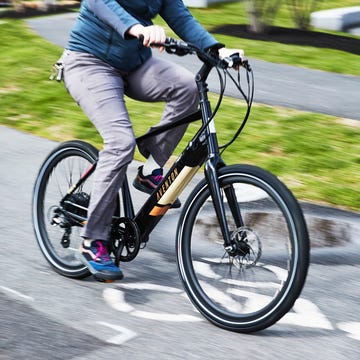
The 10 Best Electric Bikes, Tested by Our Editors
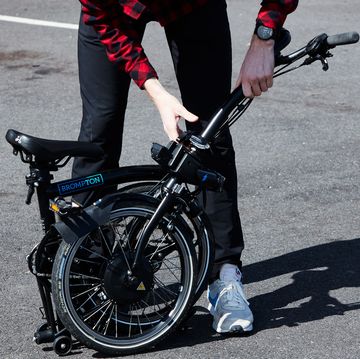
These Folding Bikes Can Go Everywhere

Smoother and Faster: The New Pivot Switchblade

The Best Beginner Mountain Bikes

Reviewed: Colnago's Italian Made C68 Gravel
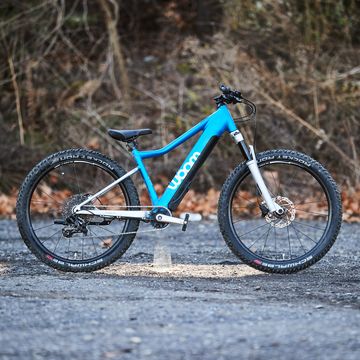
The 6 Best Kids’ Bikes in 2024
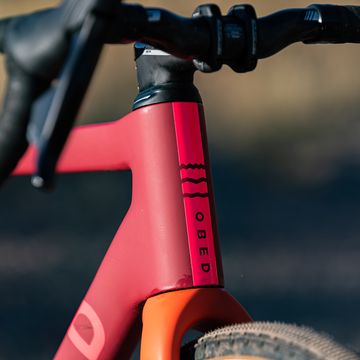
Obed’s GVR Is a Fast and Customizable Gravel Racer
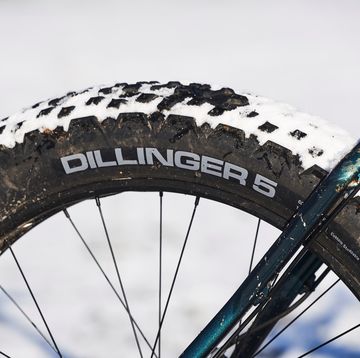
The Best Fat Bikes You Can Buy Right Now
- Help Center
- Chat with a Ride Guide
- 1-866-401-9636
- Retail Store
- Bike Services
Reset Password
We will send you an email to reset your password.
Don't have an account? Create an account
Create Account
Already have an account? Sign In
- Favorite your products & save them to your account
- Save a search & get notified when new products drop
- Be first to know about the latest events & promotions
Bike Finder
Results have arrived, trek madone 9.5 road bike - 2016, 54cm, item #brd32469, condition: certified pre-owned what's this, fit range: 5'7" - 5'10" sizing guide, every certified pre-owned bike passes our multi-point inspection.
- Frame integrity verified
- All components inspected
- Drivetrain cleaned and tuned
- Suspension adjusted
- Wheels trued
Our RideFast shipping means this bike gets to you quickly and securely. Domestic US ground rates are a flat $135 for regular bikes or $150 for e-bikes.
Quick Assembly
- Bikes arrive tuned and mostly pre-assembled
- Torque tool & video guide included
- Get riding in 15 minutes
Canadian Customers
Please note that any duties, taxes, or surcharges as required by Canadian customs and provincial authorities will be the buyer's responsibility. Shipping to Canadian addresses may take longer than expected due to customs.

30-Day Returns
If this bike isn't perfect for you, our Ride Guides will help you find the right one.
Engineered for Victory
As the most aerodynamic bike in Trek's lineup, the Madone is built for speed. Utilizing KVF (Kammtail Virtual Foil) tube shapes to cheat the wind, a stealthy brake system hidden away in the front by "Vector Wings", and a geometry that puts you into "go-time" mode, the Madone is your ticket to the top of the podium.
- Curious about one of the biggest perks of buying with TPC? Read about our Guaranteed Buyback Program . It comes standard with every bike we sell.
- New Vittoria Zaffiro Pro Graphene 2.0 tires & handlebar tape
- Light scratches on the shifters & crank arms
- Light scratches on the head tube, top tube, down tube, non-drive side seatstay, & chainstays
- Moderate scratches on the integrated seatmast & integrated seatpost
- Braking surface shows moderate wear from use
Added to Cart
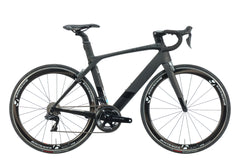
Inspected. Tested. Trusted.
What is cpo.
CPO bikes are gently ridden bikes that have been meticulously inspected, restored and serviced. Every CPO bike is cleaned, tuned and tested in our top-of-the-line Colorado headquarters. Road, mountain, ebike or gravel, TPC services each bike over 8 phases and multiple points of inspection.
Bikes are meant to be used.
Ask a Ride Guide about this
Sizing guide.
The chart below provides a general suggested range of heights and is not exact. Sizing may vary across brands.
The tailoring of any bike is an important step in the long term enjoyment of riding and it can take time to adjust to the fit of a new bike. All contact points (pedals, shoes, and saddle) can be changed and altered for personal preference, performance, and comfort.
Contact our Ride Guides if you have any questions about the fit of your new bike.
866.401.9636 - Contact the Ride Guides
Purchase your next bike with the same confidence you would when buying new. We scrutinize age, condition, and quality. If a bike meets the standard, our pro tune and service will guarantee that your ride will be in pristine condition when it arrives at your door.

IMAGES
VIDEO
COMMENTS
All use the same brake calipers and integrated bar. Sizing now mirrors the Emonda. Seven sizes, 50-62cm, are offered in H1; and nine from 47 to 64cm in H2. - Madone 9.2, $6300, built with Shimano ...
Find out how much a 2016 Trek Madone 9.5 bicycle is worth. Our Value Guide is constantly growing with pricing information and bicycle specs daily. ... 2016. 2017. 2018.
Shop the Trek Madone 9.5 Road Bike - 2016, 54cm at The Pro's Closet! Find the largest selection of CERTIFIED Pre-Owned bikes, all of which undergo a 141-point inspection and come with our Guaranteed BuyBack program! Plus, find all the bike parts and accessories you need all in one place.